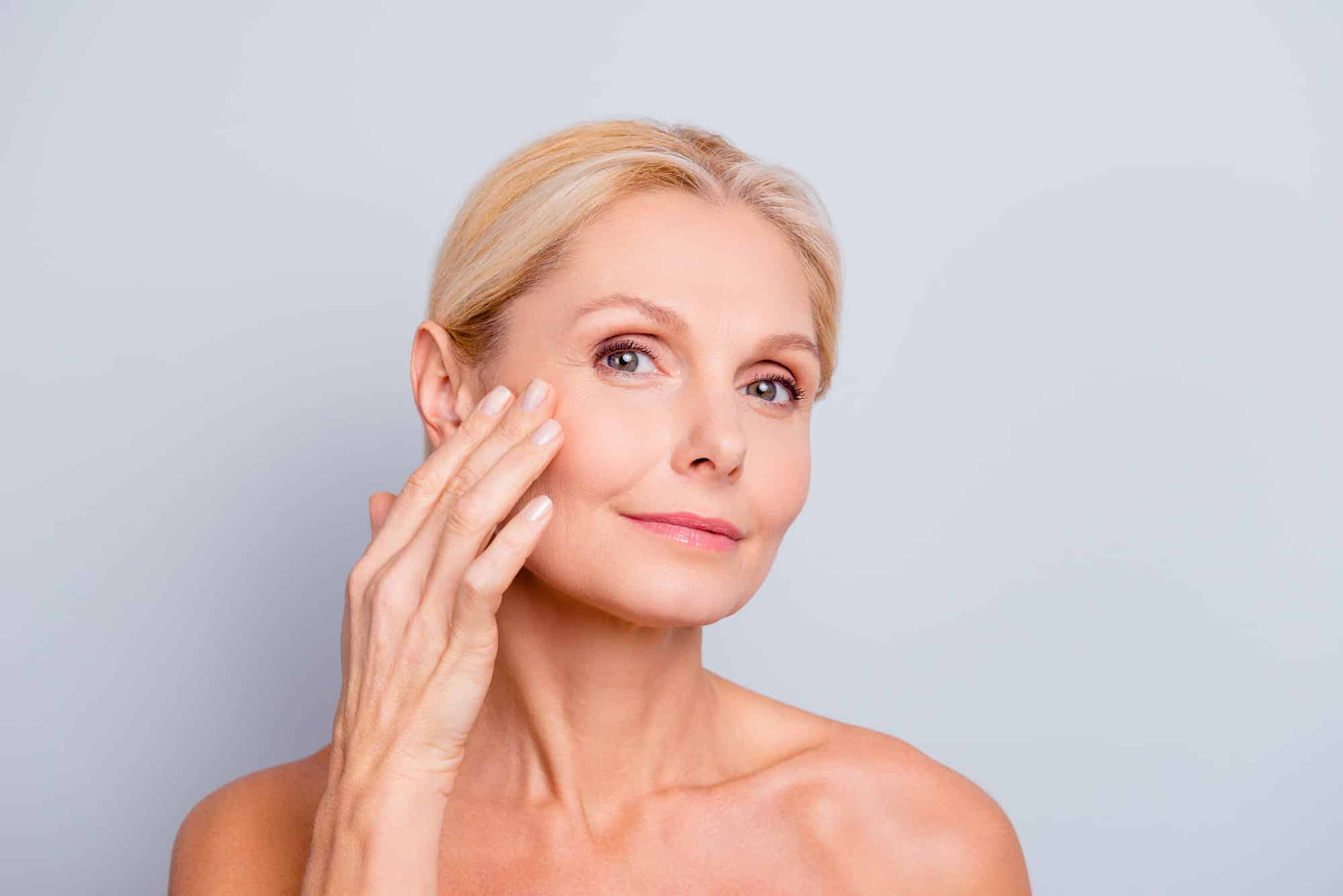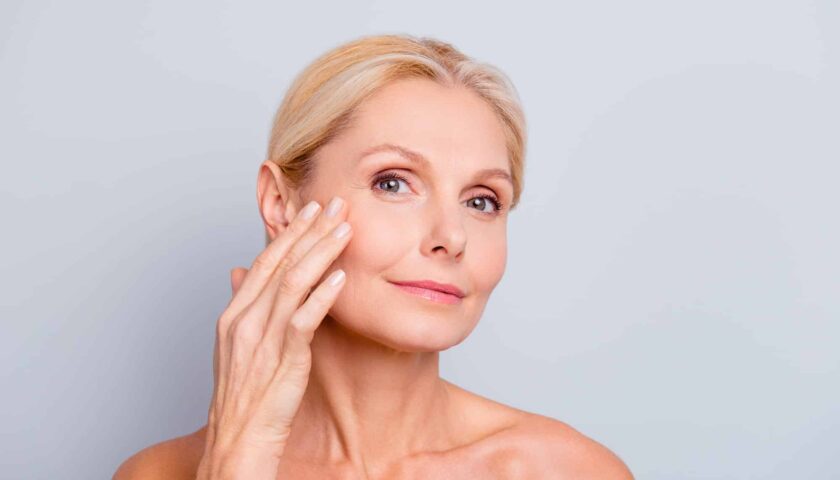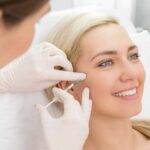
Skin naturally loses elasticity with age as the body’s collagen and elastin production slows down, leading to sagging, wrinkles, and fine lines. In the past, only surgical methods could deal with such problems, but nowadays, non-invasive skin tightening treatments can help deal with these age-related appearance changes.
Understanding the nuances of these techniques is essential to offering qualified patient care, so this article is dedicated to thoroughly examining the non-invasive skin tightening procedures that cater to diverse patient needs while minimizing downtime and risks.
Types of Non-Invasive Skin Tightening Technologies
Skin tightening treatments have evolved through the years beyond traditional boundaries. Some prominent non-invasive options include:
- Radiofrequency (RF) treatments utilize controlled heat to stimulate collagen production in the deep dermal layers. Devices like Thermage and Exilis offer customizable RF delivery, yielding gradual yet noticeable results.
- Microfocused ultrasound (MFU). Ultherapy and high-intensity focused ultrasound (HIFU) are prime examples of MFU technologies. These prominent treatments target specific depths of the skin (up to 5 mm deep) to trigger collagen synthesis. Precise energy deposition creates thermal coagulation zones, inducing neocollagenesis and ensuring minimal damage to the skin’s surface while promoting its rejuvenation. The final results of the treatment might take up to six months, but the first effects are usually seen right after the procedure.
- Laser treatments like fractional laser resurfacing and non-ablative lasers can stimulate collagen production and improve skin texture, leading to a tighter and smoother appearance. Non-ablative fractional laser systems like Fraxel and Clear + Brilliant gently heat the skin’s layers, stimulating collagen and elastin production. These skin-tightening laser treatments effectively address fine lines and improve overall skin texture.
- Microneedling Radio Frequency (MRF) treatments – aesthetic devices like Profound combine microneedling and RF technology to create controlled micro-injuries while delivering gentle heat energy to the deeper layers of the dermis. This synergistic approach results in enhanced collagen production and skin tightening.
Benefits and Safety Considerations of Non-Surgical Skin Lifts
Non-invasive skin tightening procedures provide the following advantages compared to surgical methods:
- Very short downtime allows patients to resume their daily activities shortly after the procedure.
- Non-invasive procedures avoid the risks associated with surgery and general anesthesia, making them a safer option for many patients.
- Less discomfort during the procedure, often requiring only topical numbing creams.
- Natural-looking results without the drastic changes associated with surgery.
- Stimulating collagen production which leads to gradual and natural skin tightening over time.
- Non-invasive options are versatile, addressing various concerns, including sagging skin, wrinkles, and uneven texture.
Over the years, these lifting procedures have been developed and refined to prioritize patient safety and minimize risks. However, it’s essential to note that the safety of non-invasive skin lifts depends on factors such as the specific treatment chosen, the expertise of the practitioner, and the individual’s health and skin type. Potential risks of non-invasive skin-tightening procedures include the following:
- Mild redness and swelling are often expected immediately after the procedure but usually subside within a few days.
- Some patients might experience temporary tingling or sensitivity in the treated area.
- Temporary changes in skin color, like hyperpigmentation or hypopigmentation, can occur during or after the treatment but are typically transient.
- Bruising might also occur in some cases.
Rare complications like burns, blisters, scarring, or infection can occur, although they are extremely uncommon.
Contraindications for non-surgical skin tightening procedures include:
- Pregnancy and breastfeeding;
- Active infections, inflammations, or open wounds in the treatment area;
- Certain medical conditions, for example, uncontrolled diabetes, autoimmune diseases, or bleeding disorders;
- Recent sunburn or excessive tanning can increase the risk of adverse reactions or complications from non-invasive procedures;
- Patients with a history of keloids or abnormal scarring might not be ideal candidates, as some procedures can potentially worsen scarring.
Alternatives to Non-Invasive Skin Lift Treatments
Alternatives to non-invasive skin tightening treatments include surgical and non-surgical options that address skin laxity and promote a youthful appearance. Here are some worth considering:
Surgical Procedures:
- A facelift (rhytidectomy) involves lifting and tightening the skin and underlying tissues to reduce sagging and wrinkles.
- A neck lift targets sagging skin and excess fat in the neck and jawline area.
- A brow lift (forehead lift) elevates the eyebrows and smooths forehead wrinkles by removing excess skin and adjusting underlying muscles.
Minimally Invasive Procedures:
- A thread lift provides immediate results by inserting dissolvable threads under the skin to tighten and lift sagging tissue. The effect improves over time as collagen builds around the threads.
- Botox (botulinum toxin) injections, primarily known as a crepey skin treatment, can also provide a subtle lifting effect by relaxing the muscles that contribute to sagging.
- Injectable dermal fillers like Juvederm and Restylane restore or add volume and subtly lift sagging skin by filling in areas of hollowing or wrinkles.
Home Remedies and Natural Methods:
- Over-the-counter or prescription topical products containing ingredients like retinol, peptides, and hyaluronic acid may help improve skin texture and face tightening over time.
- Maintaining a balanced diet, staying hydrated, avoiding smoking, and guarding the skin from the sun’s harmful influence can positively affect skin health.
- Regular facial exercises can help tone and tighten facial muscles to some point.
Radiofrequency and Ultrasound Devices for Home Use deliver energy to the skin, promoting collagen production and potentially improving skin tightness.
The effectiveness of these alternatives will vary based on individual factors such as age, severity of skin condition, and treatment goals.
Conclusion
Non-invasive skin tightening treatments offer medical professionals a toolkit of advanced technologies to address sagging skin and promote skin rejuvenation. These procedures can be tailored to each patient’s uniqueness and complemented with other methods to achieve the best results possible.
By focusing on patient needs, customizing treatments, and keeping up with the latest developments such as products like Xeomin, aesthetic doctors can help their patients achieve remarkable results safely and non-invasively.
FAQ
What is the best non-invasive skin tightening treatment?
The term “best” can vary based on individual preferences, skin type, severity of the problem, and desired results. However, all skin tightening procedures mentioned above in this article have gained recognition for their effectiveness in promoting collagen production, reducing wrinkles, and enhancing skin elasticity.
Our recommendation for the most suitable procedure for most patients would be MRF treatment due to its low pain level during the application, consistent visible results, and positive patient experience.
Is there a non-surgical way to tighten loose skin?
There are several non-surgical skin-tightening methods designed to stimulate collagen production, improve skin elasticity, and create a firmer appearance:
- RF treatments (for example, Thermage);
- Ultherapy;
- HIFU (High-Intensity Focused Ultrasound);
- Laser skin-tightening;
- Microneedling, including radiofrequency microneedling (RFM), creates controlled micro-injuries to the skin, promoting collagen synthesis and skin tightening.
- Injectable treatments like Sculptra stimulate collagen growth, gradually tightening skin and improving texture.
- Cryolipolysis treatments like CoolSculpting use controlled cooling to reduce fat deposits, which can result in a subtle skin-tightening effect in the treated area.
- Thread lift procedures are based on inserting dissolvable threads under the skin for lifting and tightening loose skin. Results are immediate and improve over time as collagen builds around the threads.
The effectiveness of these treatments for skin tightening without surgery can vary based on factors like the severity of the patient’s skin laxity, the individual’s response to treatment, and the specific technology used.
How can you lift and tighten the skin naturally?
While natural methods may not produce as dramatic results as medical treatments, they can help improve skin elasticity and promote a more lifted appearance over time. Some approaches for natural skin tightening and lifting include the following:
- A healthy diet rich in antioxidants, vitamins (particularly vitamin C), and minerals, including regular fruits, vegetables, lean proteins, and products high in omega-3 fatty acids, can promote collagen production and skin health.
- Proper hydration is vital for maintaining skin elasticity. Drinking an adequate amount of water throughout the day keeps the skin hydrated.
- Protection from harmful UV rays by wearing sunscreen daily. Sun exposure can provoke premature skin aging and loss of elasticity.
- Certain facial exercises, like facial yoga combined with taping, can stimulate blood flow, improve muscle tone, and enhance skin firmness.
- Skincare products that contain ingredients like retinol, peptides, and hyaluronic acid can support collagen production and improve skin texture.
- Gently massaging the face and practicing lymphatic drainage techniques can improve circulation and reduce fluid retention, contributing to a firmer appearance.
- Healthy lifestyle – refraining from cigarettes and excessive alcohol consumption and getting enough sleep (which allows the body to repair and regenerate) can positively affect skin health. Regular physical activity improves blood circulation and muscle tone, strengthening skin firmness.
- Some natural oils like coconut, argan, and rosehip oil contain antioxidants and fatty acids that can improve skin texture and hydration.
However, natural cures for crepey skin work better for younger age patients, while the signs of aging and skin sagging are not as prominent.
References
O’Connor K, Kandula P, Kaminer MS. Non-surgical skin tightening. Plastic and Aesthetic Research. January 2021. doi:10.20517/2347-9264.2021.60.
Gold MH. Noninvasive skin tightening treatment. PubMed Central (PMC). https://www.ncbi.nlm.nih.gov/pmc/articles/PMC4479364/. Published June 1, 2015.
Fabi SG. Noninvasive skin tightening: focus on new ultrasound techniques. Clinical, Cosmetic, and Investigational Dermatology. February 2015:47. doi:10.2147/ccid.s69118.
Pritzker RN, Hamilton HK, Dover JS. Comparison of different technologies for noninvasive skin tightening. J Cosmet Dermatol. 2014;13(4):315-323. doi:10.1111/jocd.12114.
Injectable aesthetics are popular due to their ability to provide noticeable results with minimal downtime compared to surgical procedures. They are versatile and can be tailored to meet individual aesthetic goals, whether it's enhancing lips, restoring facial volume, or smoothing out wrinkles. However, they should always be administered by qualified professionals to ensure safety and achieve optimal results.
Injectable aesthetics are used to enhance facial features, reduce the signs of aging, and improve overall facial symmetry and appearance.
Key types of injectable aesthetics include:
-
Dermal Fillers: These injectables are used to add volume, fill in wrinkles and folds, and enhance facial contours. They often contain substances like hyaluronic acid, collagen, or calcium hydroxylapatite, which help plump up the skin and smooth out fine lines and wrinkles.
-
Botulinum Toxin (Botox): Botulinum toxin injections temporarily relax facial muscles that cause wrinkles and lines to form. It is commonly used to treat forehead lines, frown lines between the eyebrows, and crow's feet around the eyes.
-
Collagen Stimulators: These injectables stimulate the body's own collagen production, helping to improve skin texture and firmness over time. Examples include poly-L-lactic acid (Sculptra) and calcium hydroxylapatite (Radiesse).
-
Neurotoxin Injections: Besides Botox, other neurotoxins such as Dysport and Xeomin are used similarly to reduce wrinkles and lines.





